
How to Use TL074CN Op-amp: Examples, Pinouts, and Specs
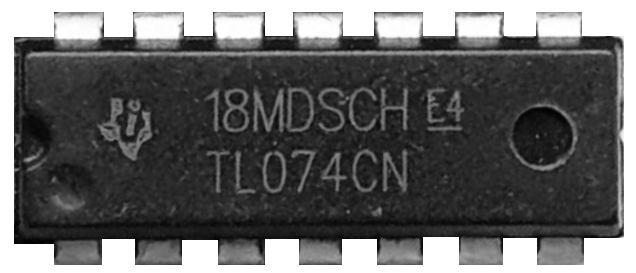
 Design with TL074CN Op-amp in Cirkit Designer
Design with TL074CN Op-amp in Cirkit DesignerIntroduction
The TL074CN is a low-noise JFET-input operational amplifier (op-amp) manufactured by Texas Instruments. It features a high slew rate, low distortion, and low input bias current, making it ideal for precision analog signal processing. The TL074CN contains four independent op-amps in a single 14-pin package, offering excellent performance for audio, instrumentation, and active filter applications.
Explore Projects Built with TL074CN Op-amp
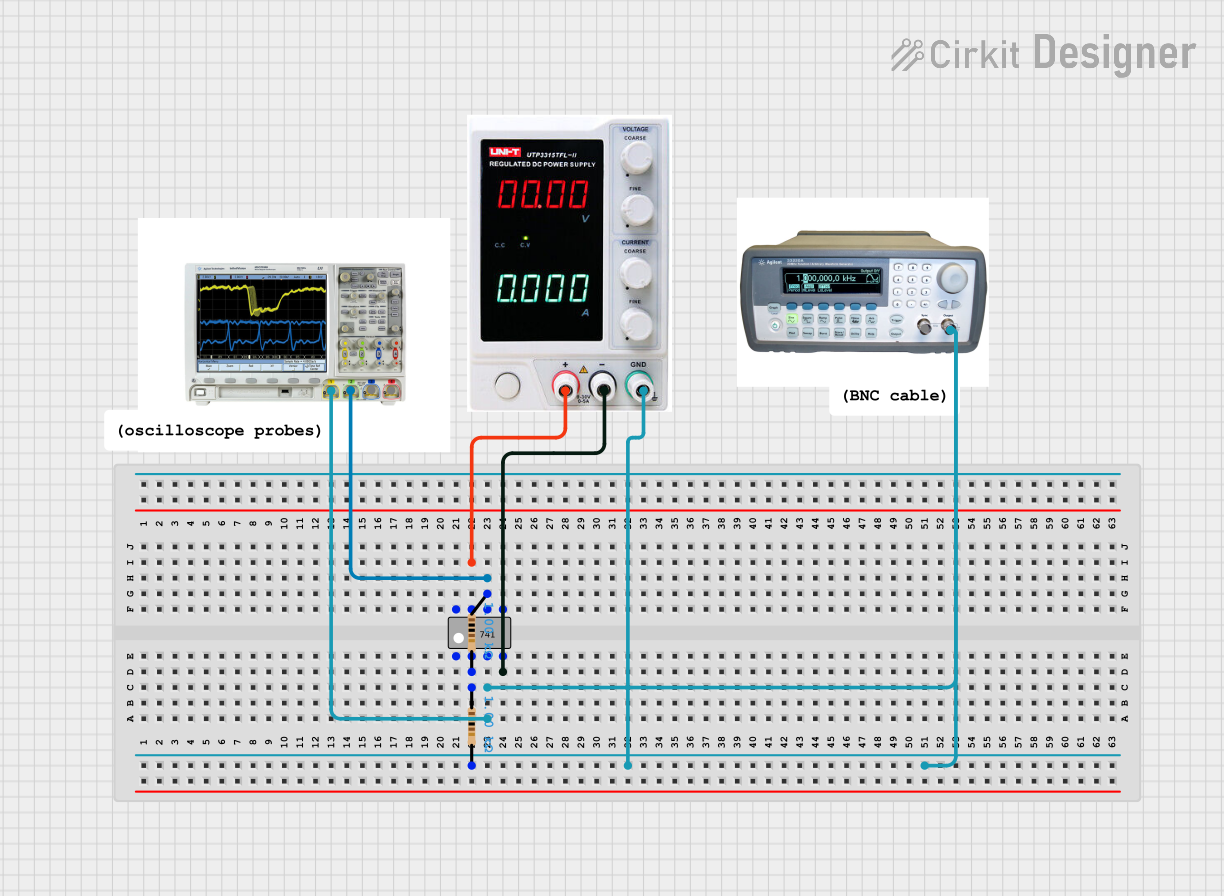
 Open Project in Cirkit Designer
Open Project in Cirkit Designer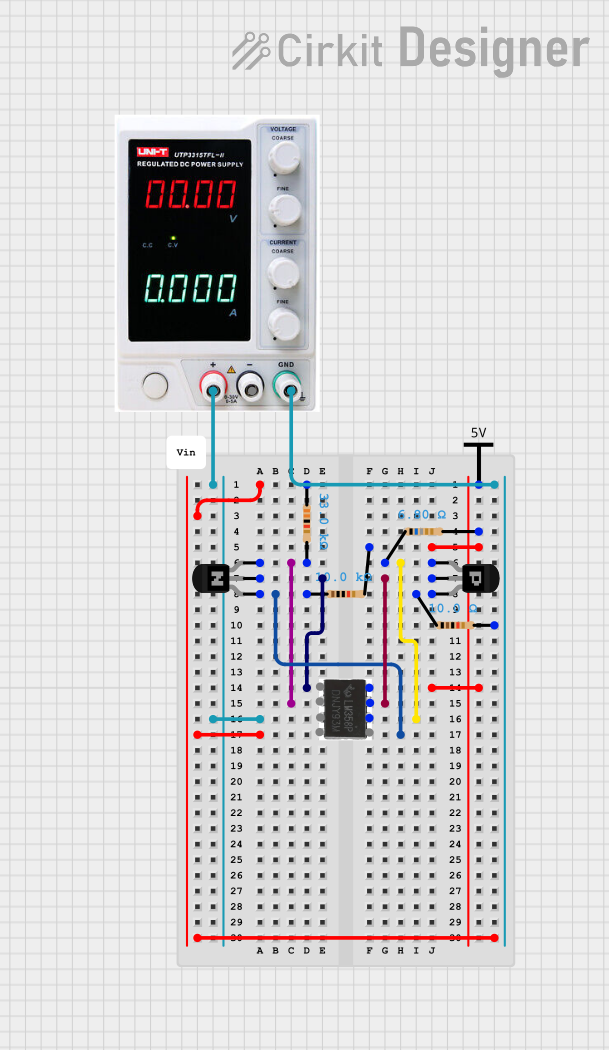
 Open Project in Cirkit Designer
Open Project in Cirkit Designer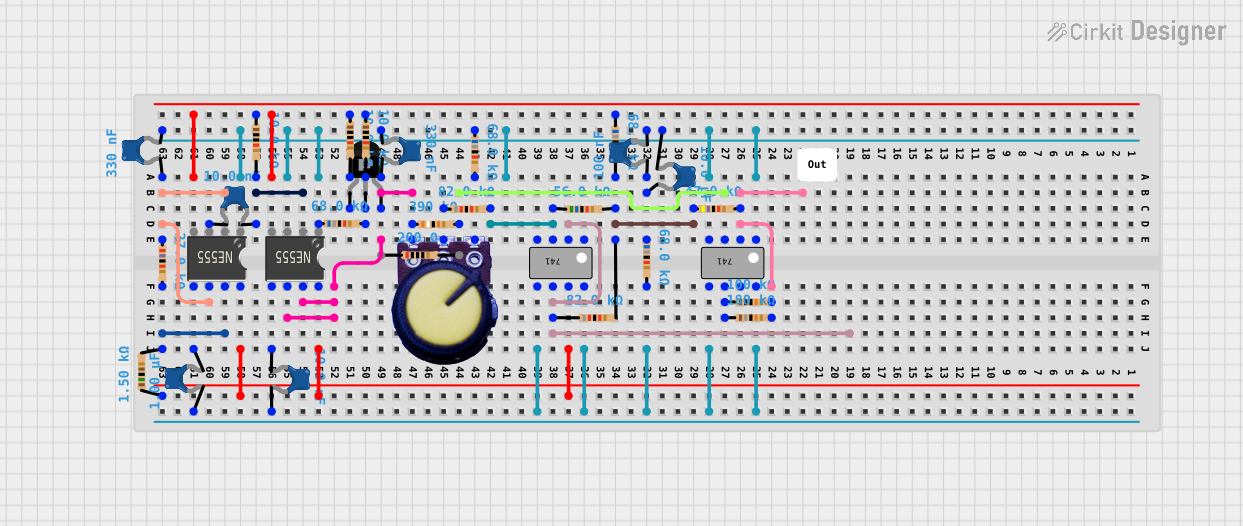
 Open Project in Cirkit Designer
Open Project in Cirkit Designer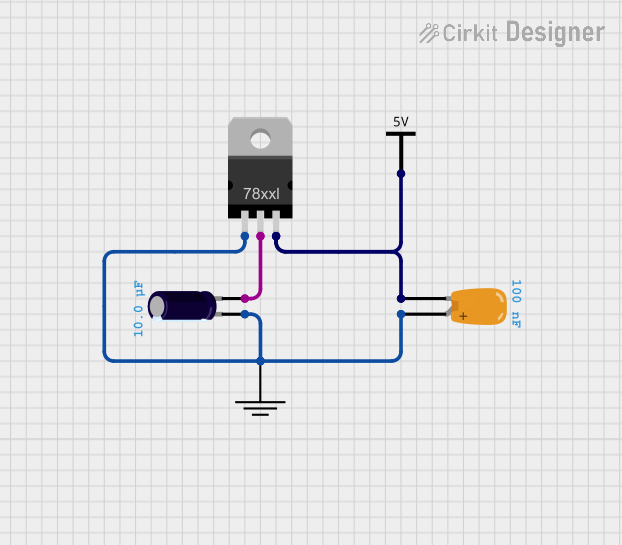
 Open Project in Cirkit Designer
Open Project in Cirkit DesignerExplore Projects Built with TL074CN Op-amp

 Open Project in Cirkit Designer
Open Project in Cirkit Designer
 Open Project in Cirkit Designer
Open Project in Cirkit Designer
 Open Project in Cirkit Designer
Open Project in Cirkit Designer
 Open Project in Cirkit Designer
Open Project in Cirkit DesignerCommon Applications
- Audio preamplifiers and equalizers
- Active filters and oscillators
- Signal conditioning and processing
- Analog computing and integrators
- Data acquisition systems
Technical Specifications
Key Technical Details
| Parameter | Value |
|---|---|
| Supply Voltage (Vcc) | ±3V to ±18V (dual supply) or 6V to 36V (single supply) |
| Input Offset Voltage | 3mV (typical) |
| Input Bias Current | 65pA (typical) |
| Slew Rate | 13V/µs (typical) |
| Gain Bandwidth Product | 3MHz (typical) |
| Input Impedance | 10⁸ Ω (typical) |
| Output Voltage Swing | ±13.5V (with ±15V supply) |
| Operating Temperature Range | 0°C to 70°C |
| Package Type | 14-pin PDIP (Plastic Dual In-line Package) |
Pin Configuration and Descriptions
The TL074CN is housed in a 14-pin PDIP package. Below is the pinout and description:
| Pin Number | Pin Name | Description |
|---|---|---|
| 1 | Output 1 | Output of op-amp 1 |
| 2 | Inverting Input 1 | Inverting input of op-amp 1 |
| 3 | Non-Inverting Input 1 | Non-inverting input of op-amp 1 |
| 4 | Vcc+ | Positive power supply |
| 5 | Non-Inverting Input 2 | Non-inverting input of op-amp 2 |
| 6 | Inverting Input 2 | Inverting input of op-amp 2 |
| 7 | Output 2 | Output of op-amp 2 |
| 8 | Output 3 | Output of op-amp 3 |
| 9 | Inverting Input 3 | Inverting input of op-amp 3 |
| 10 | Non-Inverting Input 3 | Non-inverting input of op-amp 3 |
| 11 | Vcc- | Negative power supply (ground in single supply) |
| 12 | Non-Inverting Input 4 | Non-inverting input of op-amp 4 |
| 13 | Inverting Input 4 | Inverting input of op-amp 4 |
| 14 | Output 4 | Output of op-amp 4 |
Usage Instructions
How to Use the TL074CN in a Circuit
- Power Supply: Connect the TL074CN to a dual power supply (e.g., ±15V) or a single power supply (e.g., 12V). Ensure the supply voltage does not exceed the absolute maximum ratings.
- Input Connections: Use the inverting and non-inverting inputs of each op-amp as required by your circuit design. For unused op-amps, connect the inverting input to the output and the non-inverting input to ground to prevent oscillation.
- Output Connections: The output pins can drive loads with moderate impedance. Avoid connecting heavy loads directly to the output.
- Bypass Capacitors: Place decoupling capacitors (e.g., 0.1µF ceramic and 10µF electrolytic) close to the power supply pins to reduce noise and improve stability.
Example Circuit: Non-Inverting Amplifier
Below is an example of using the TL074CN as a non-inverting amplifier with an Arduino UNO:
Circuit Diagram
- Connect the non-inverting input (e.g., pin 3 for op-amp 1) to the input signal.
- Connect the inverting input (e.g., pin 2 for op-amp 1) to a voltage divider formed by resistors R1 and R2.
- Connect the output (e.g., pin 1 for op-amp 1) to the load or next stage.
Arduino Code Example
// Example: Reading an amplified signal from the TL074CN with Arduino UNO
// The TL074CN is configured as a non-inverting amplifier.
// Ensure the input signal is within the Arduino's ADC range (0-5V).
const int analogPin = A0; // Analog pin connected to the op-amp output
int sensorValue = 0; // Variable to store the ADC reading
void setup() {
Serial.begin(9600); // Initialize serial communication
}
void loop() {
sensorValue = analogRead(analogPin); // Read the amplified signal
float voltage = sensorValue * (5.0 / 1023.0); // Convert ADC value to voltage
Serial.print("Amplified Voltage: ");
Serial.println(voltage); // Print the voltage to the Serial Monitor
delay(500); // Wait for 500ms before the next reading
}
Important Considerations
- Input Impedance: The high input impedance of the TL074CN makes it suitable for high-impedance sources, but ensure proper impedance matching for optimal performance.
- Stability: Use proper bypass capacitors to prevent oscillations and noise.
- Thermal Management: Operate the TL074CN within its specified temperature range to avoid performance degradation.
Troubleshooting and FAQs
Common Issues and Solutions
No Output Signal:
- Verify the power supply connections (Vcc+ and Vcc-).
- Check the input signal and ensure it is within the op-amp's input voltage range.
- Ensure proper connections for the inverting and non-inverting inputs.
Output Clipping:
- Ensure the input signal amplitude does not exceed the op-amp's input range.
- Verify that the gain is not set too high for the given supply voltage.
Oscillations or Noise:
- Add bypass capacitors close to the power supply pins.
- Check for proper grounding and minimize long signal traces.
Overheating:
- Ensure the op-amp is not driving a load beyond its current capabilities.
- Verify that the supply voltage is within the recommended range.
FAQs
Q: Can the TL074CN be used with a single power supply?
A: Yes, the TL074CN can operate with a single supply voltage (e.g., 12V or 5V). In this case, the non-inverting input should be biased to a mid-supply voltage for proper operation.
Q: What is the maximum output current of the TL074CN?
A: The TL074CN can source or sink up to 10mA of output current. For higher loads, use a buffer stage.
Q: How do I handle unused op-amps in the TL074CN?
A: Connect the inverting input to the output and the non-inverting input to ground to prevent oscillation.
Q: Is the TL074CN suitable for audio applications?
A: Yes, the TL074CN's low noise and low distortion characteristics make it an excellent choice for audio preamplifiers and equalizers.